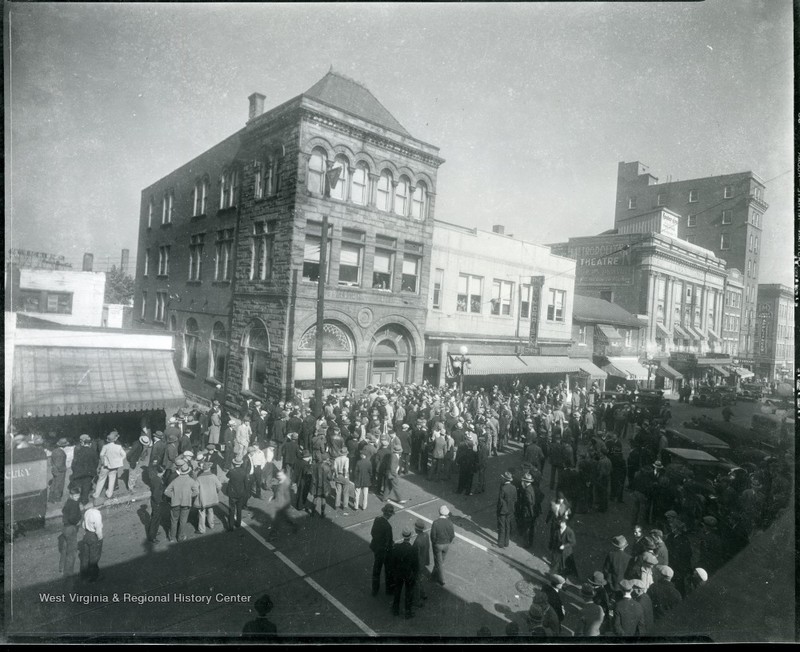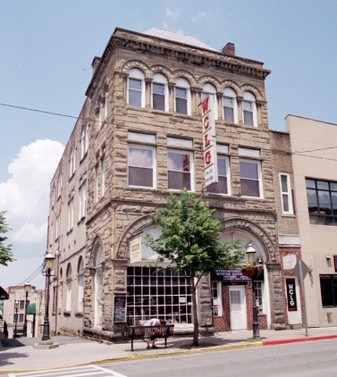Second National Bank Building
Introduction
Text-to-speech Audio
Images
Crowds of people rush to the Second National Bank Building to withdraw money during the Great Depression. Photo taken October 31, 1931.

SNB building today.

Backstory and Context
Text-to-speech Audio
The Second National Bank (SNB) Building was built in 1894. Elmer F. Jacobs designed the structure using his signature version of Romanesque Revival. The façade is a three-story elevation constructed of neutral stone masonry. The first-floor features two similar arched tympana. However, in a departure from Jacobs’ typical vertical symmetry, the left tympanum rests over a window, while the right tympanum caps the entrance. A medallion displaying the date of the building’s construction nestles in the space where the tyampna meet. A small belt courser projects slightly from the façade and separates the first and second floor. Just above this courser the words “Farmers and Merchants Bank” are chiseled into the stone. The second-floor features four windows, each spanned by a separate lintel. On the third floor, a unit of six arched window bays are separated by simple colonettes. The SNB Building is capped by a dentiled cornice. The exterior of the building has experienced some degradation over time, though the historic character remains almost wholly intact.
Morgantown’s SNB began operating out of its namesake building soon after construction finished. As a national bank, the organization was authorized to print money. This printing likely occurred in the SNB Building, though the bank stopped printing money in 1931 – possibly due to the Great Depression. Shortly after printing stopped, the SNB sold their building to the Farmers and Merchants Bank of Reedsville, WV in 1937. The Farmers and Merchants Bank operated out of the SNB building for almost two decades and added the lettering between the first and second floors. In the early 1950s, local radio station WCLG purchased the SNB building. WCLG has occupied the upper floors of the building since then, though the retail space on the first floor is currently rented by Universitees.
Sources
1955 Broadcasting Yearbook-Marketbook. Broadcasting Publications Inc., 1955.
Old Money from the Second National Bank of Morgantown | 2458, Antique Money. Accessed October 7th 2020. http://www.antiquemoney.com/national-bank-notes/west-virginia/old-money-from-the-second-national-bank-of-morgantown-2458/.
Rasmussen, Barbara E. Downtown Morgantown Historic District, Monongalia County, WV, National Register of Historic Places. December 10th 1995. Accessed October 7th 2020. http://www.wvculture.org/shpo/nr/pdf/monongalia/96000441.pdf.
Second National Bank Building, Main Street Morgantown. Accessed October 7th 2020. https://mainstreetmorgantown.wordpress.com/second-national-bank-building/.
Gibson, Scott. "Rush on Second National Bank Building During the Depression, Morgrantown, W. Va." 1931. West Virginia & Regional History Center. Accessed October 7, 2020. https://wvhistoryonview.org/catalog/008079.
"Second National Bank Building." Main Street Morgantown. Accessed October 7, 2020. https://mainstreetmorgantown.wordpress.com/second-national-bank-building/.
